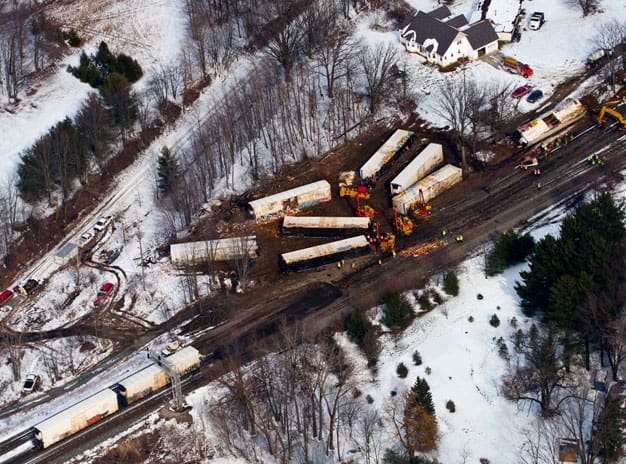It often takes an event before people realize what specialty coverage can provide to protect their financial statement from a significant loss. Some events, such as major storms forcing us to analyze wind or flood coverage, covid had everyone reviewing business interruption/property damage coverage restrictions, and earthquakes in areas that have not had earthquakes prompted us to look at the earthquake limitations on the property policies. These types of perils have many exceptions, and sometimes full exclusions on insurance policies must be discussed before such events occur. For example, the recent East Palestine train derailment led to many insureds and risk managers reviewing their policies to determine what, if any, coverage they would have concerning a pollution event.
Insureds should evaluate the actual pollution liability exposures that are present in their business operations. Insureds often feel that pollution insurance is only needed if they are large corporations with chemical exposures in their manufacturing operations or they are transporting large quantities of pollutants from point A to point B. These types of companies usually have analyzed their exposures in detail and have many government regulations that may require them to purchase some environmental policy.
This article reminds everyone that they may have an environmental exposure. They should discuss and determine the best option, whether to insure, self-insure, or contractually transfer the risk to another party, based on their appetite for risk and the cost of securing an environmental policy. The answer is often a combination of one of these three options.
There are many different types of Pollution/environmental insurance coverage. The following is a brief description of the different kinds of pollution coverage available. It is not meant to be an exhaustive list, but it will help you to understand some of the available coverages and the exposures you may have when a pollution event occurs. Unfortunately, many insureds are under the false impression that their property, liability, or automobile policies will cover them if an environmental incident occurs. These standard policies may respond in some instances, but there is minimal coverage, and, in some cases, these policies have absolute exclusions for a pollution event. In addition, pollution coverage forms are not standardized and must be evaluated to secure the proper coverage.
- There are first-party coverages, more commonly referred to as clean-up coverage. These can be initiated for on-site clean-up or offsite clean-up. Business interruption coverage can also be added under first-party coverage.
- Another option is bodily injury and property damage coverage for third-party liability claims that you may be liable for if you caused or contributed to the occurrence of the environmental incident.
- Pollution policies are also available for transportation pollution coverages and, in some cases, disposal of contaminant exposures. Real Estate risks can also purchase environmental coverage for mold, asbestos, or indoor air quality exposure like Legionella.
The above information shows that no matter what industry or the size of your company, there could be some pollution exposure that needs to be discussed with your risk manager so you can make an educated decision on whether you should purchase environmental coverage. Suppose the decision is made to purchase environmental insurance. In that case, your risk manager should advise you on the proper contractual risk transfer tools, policy forms, and adequate limits/deductibles that will reduce or eliminate the possibility of an environmental incident adversely affecting your financial statements.
Henderson Brothers has many professionals with vast experience with environmental issues common to many industry groups. We know how to craft the proper coverage form that will provide you with comprehensive coverage and a competitive solution for a possible environmental issue.
Don’t wait until you face adversity; be proactive and determine the best solution for your company.
Please note that the information contained in this posting is designed to provide general awareness in regard to the subject matter covered. It is not provided as legal, medical, or tax advice, nor is it intended to address all concerns in your workplace or for public health. No representation is made as to the sufficiency for your specific company’s needs. This post should be reviewed by your legal counsel or tax consultant before use.



